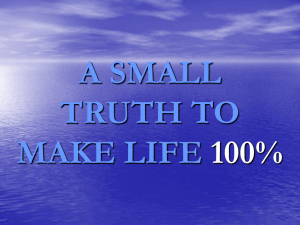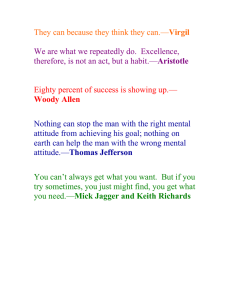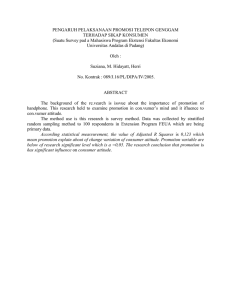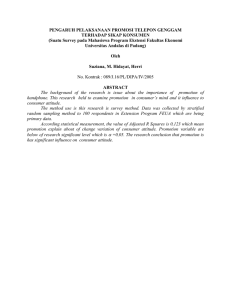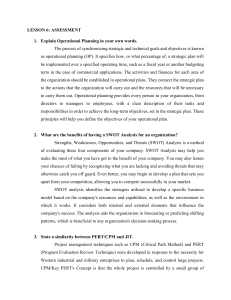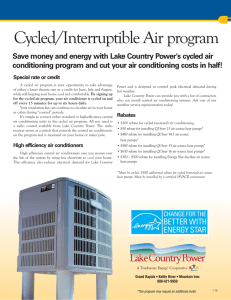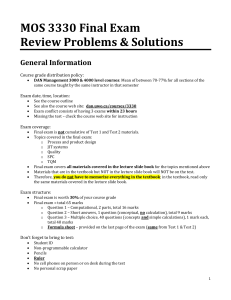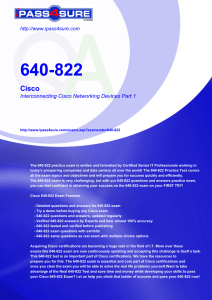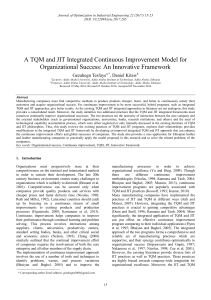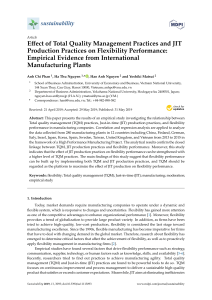Cycle Time Reduction, Apr 8
advertisement
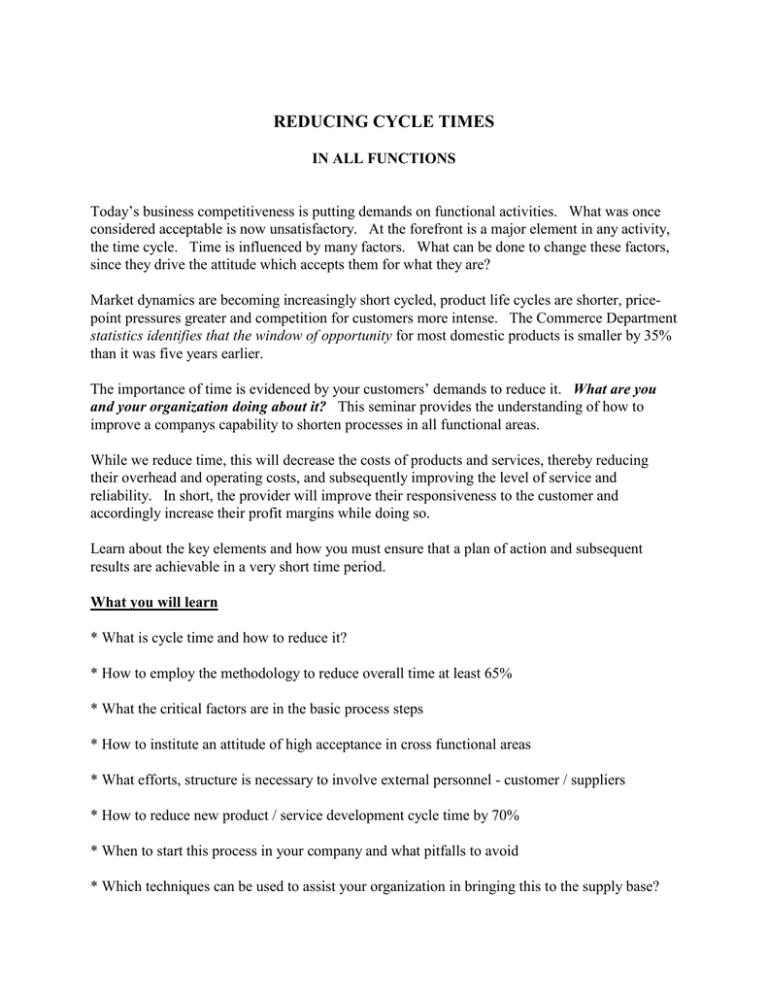
REDUCING CYCLE TIMES IN ALL FUNCTIONS Today’s business competitiveness is putting demands on functional activities. What was once considered acceptable is now unsatisfactory. At the forefront is a major element in any activity, the time cycle. Time is influenced by many factors. What can be done to change these factors, since they drive the attitude which accepts them for what they are? Market dynamics are becoming increasingly short cycled, product life cycles are shorter, pricepoint pressures greater and competition for customers more intense. The Commerce Department statistics identifies that the window of opportunity for most domestic products is smaller by 35% than it was five years earlier. The importance of time is evidenced by your customers’ demands to reduce it. What are you and your organization doing about it? This seminar provides the understanding of how to improve a companys capability to shorten processes in all functional areas. While we reduce time, this will decrease the costs of products and services, thereby reducing their overhead and operating costs, and subsequently improving the level of service and reliability. In short, the provider will improve their responsiveness to the customer and accordingly increase their profit margins while doing so. Learn about the key elements and how you must ensure that a plan of action and subsequent results are achievable in a very short time period. What you will learn * What is cycle time and how to reduce it? * How to employ the methodology to reduce overall time at least 65% * What the critical factors are in the basic process steps * How to institute an attitude of high acceptance in cross functional areas * What efforts, structure is necessary to involve external personnel - customer / suppliers * How to reduce new product / service development cycle time by 70% * When to start this process in your company and what pitfalls to avoid * Which techniques can be used to assist your organization in bringing this to the supply base? * What methodology is to be used when planning and implementing the process? * How to utilize your information technology as a tool in cycle time reduction * How to identify wasteful activities * What are the four key elements which impact all cycle times - whether service related or administrative or manufacturing CYCLE TIME Outline I. What is Cycle Time? * Defining cycle time * The types of cycle times - administrative vs. manufacturing * Identifying the activities/areas involved * Understanding the common goals * Exercise II. Why do it? * Being a survivor vs. being a success * Agent of change - focusing attack * Opportunities identified - successes III. Creating a model * Reviewing administrative, service manufacturing and other functions * Outlining the basic functions on how they apply to various activities * Initiating the measurements to ensure achievement IV. Cultivating the basic tools required * Team building - working elements * Problem solving - process for visibility to solutions * Specific subject training to provide skills * Administrative vehicles - organization and guidelines V. Principles/concepts appropriate in all areas * Relating TQM/JIT/Lean/Waste * Supplier - customer relations * Internal vs. external identities * Involvement and empowerment of people * Accountability and measurement - including financial * Utilization of information technology VI. Techniques to support the employment of principles * Constraint management * Reduce magnitude of problem * Concurrency of activities * Establishing hurdles using common/sense practical approaches * Data accumulation methodologies / benchmarking * Cost vs. price considerations * Audit devices - process, records.... * Case study VII. Implementation process * Addressing attitudinal walls * Organizing for success - ensuring participation * Defining the approach and resources * Steering the process to continuous improvement
